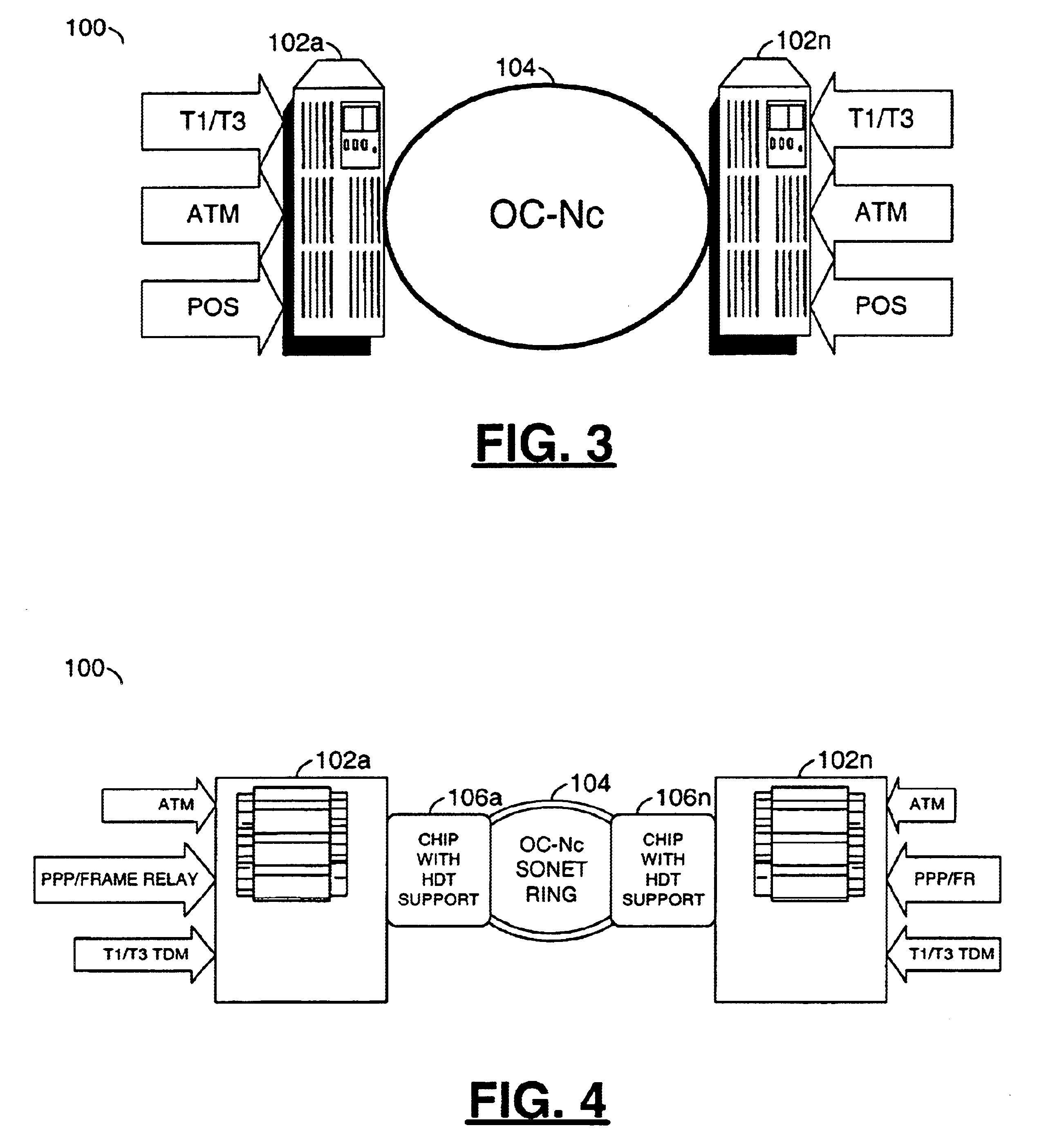Hybrid data transport scheme over optical networks
a data transport and optical network technology, applied in data switching networks, time-division multiplexing selection, multiplex communication, etc., can solve the problems of inefficient utilization of fiber bandwidth for data packets by sonet/sdh, inability to carry both fixed-bandwidth and variable-bandwidth channels, and inability to support data mixing. achieve the effect of effectively boosting sonet bandwidth and significant savings in optical networking equipmen
- Summary
- Abstract
- Description
- Claims
- Application Information
AI Technical Summary
Benefits of technology
Problems solved by technology
Method used
Image
Examples
Embodiment Construction
The present invention may provide a Hybrid Data Transport (HDT) protocol that may allow transmission of fixed bandwidth channels (e.g., T1 / T3), variable-bandwidth data sources (e.g., ATM), IP and any other protocol data in a single SONET frame using a single fiber network. The protocol of the present invention may work seamlessly across a mix of SONET and non-SONET networks, and may yield cost savings in fiber infrastructure, equipment, and operation.
With the use of the Hybrid Data Transport (HDT) protocol of the present invention, an existing fiber network may be fully utilized to transport a number of different types of traffic. The present invention may additionally dynamically. manage bandwidth usage on a packet-by-packet basis.
The present invention may provide spatial reuse of bandwidth, allocation of PDH bandwidth in 64 Kbps increments, protocol-independent MPLS (Multi-Protocol Label Switching) support, and / or seamless operation over point-to-point and ring networks with SONET...
PUM
 Login to View More
Login to View More Abstract
Description
Claims
Application Information
 Login to View More
Login to View More - R&D
- Intellectual Property
- Life Sciences
- Materials
- Tech Scout
- Unparalleled Data Quality
- Higher Quality Content
- 60% Fewer Hallucinations
Browse by: Latest US Patents, China's latest patents, Technical Efficacy Thesaurus, Application Domain, Technology Topic, Popular Technical Reports.
© 2025 PatSnap. All rights reserved.Legal|Privacy policy|Modern Slavery Act Transparency Statement|Sitemap|About US| Contact US: help@patsnap.com



